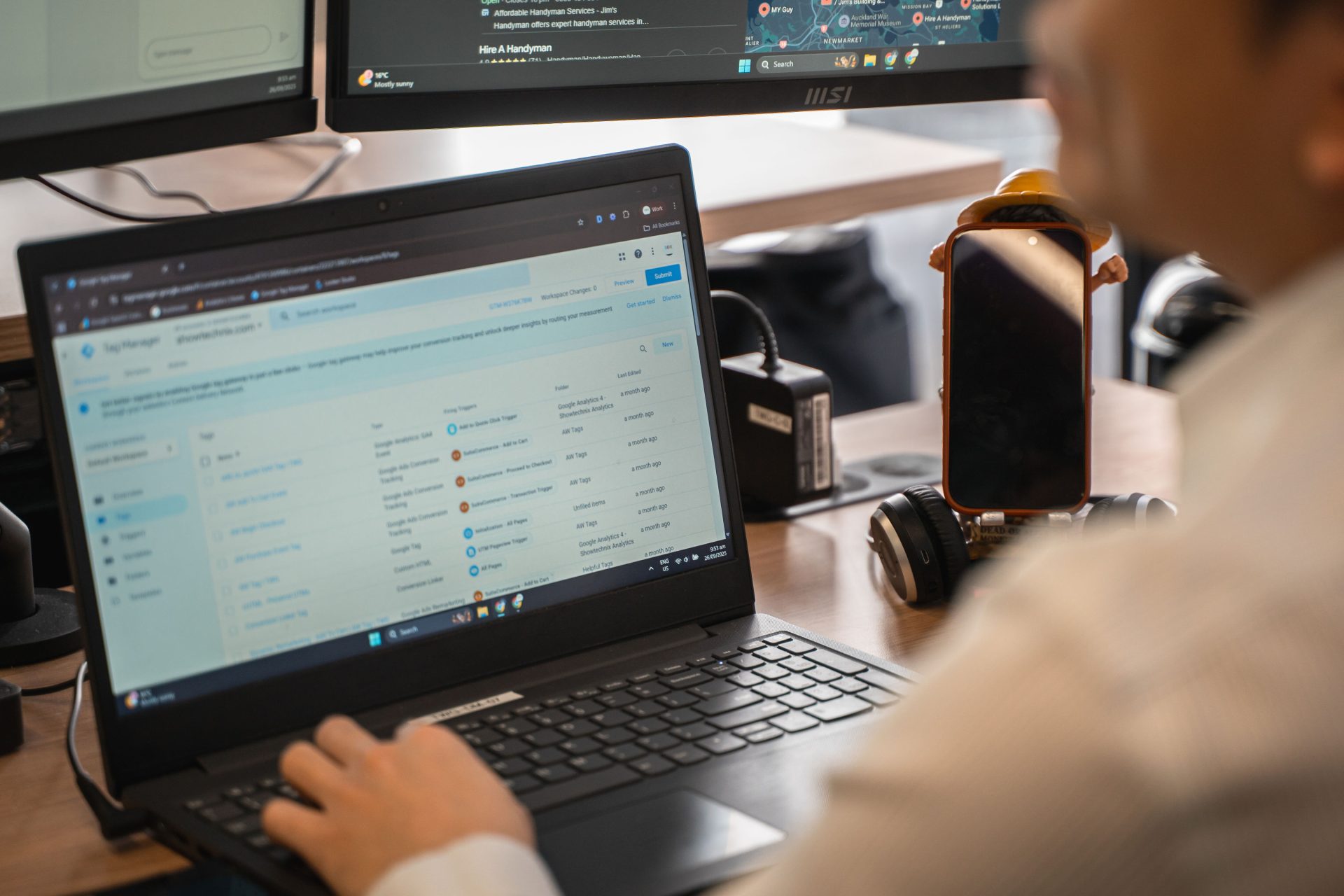Properly combined, on-page and technical SEO can be powerful tools to boost your website rankings. Here, we have put together an SEO best practices checklist to help you understand the points that need to be hit to gain and retain online visibility for your business. While these are not the only elements you will need to address, this is a fairly comprehensive start.
It pays to remember that SEO is a dynamic, ongoing discipline that flexes and alters; it’s not a one-time fix or a set-and-forget. While DIY may be part of your DNA, we recommend you choose a qualified person to work on your website’s search engine optimisation for the best chance of success.
Be sure to choose a digital marketing agency that can create, host, and maintain your site and provide all the SEO services required to start ranking and keep your spot secure over time. Getting all this in one place will likely save you money in the long run.
Our Essential SEO Checklist for 2025
Take a look at our checklist below for a breakdown of our tips for 2025 to understand how an expert approach to search engine optimisation can jigsaw together to create online and real-life success for your business.
1: Write Optimised Meta Titles & Descriptions
Before you get a single word of content onto your website pages, you need strong Meta Titles and Meta Descriptions. To nail meta tags, you need research, keywords and auditing tools. Meta tags have specific character count requirements, including your business name, the primary keyword, and a strong CTA that aligns with your brand voice. Clumsy meta tags can spell disaster for your rankings, so it’s vital to get expert assistance with this key element.
2: Ensure You Have Tagged Headings
Tagged headings need to be relevant to the intent of the search, they must contain the keywords the right number of times, and they vary in terms of statement or question according to the type of content you are writing. Tight headlines that are properly formatted can make a significant difference to the number of hits your website collects. It’s quite easy to overdo it, collate incorrectly and blow out on keywords here. Special attention should be paid to H1, H2 and H3; these must be configured correctly and added a certain number of times for maximum impact.
3: Check if Your Site is Mobile-Friendly
Users look for you on their phones 92.3% of the time, so if your website is not responsive, you are likely losing business. Responsivity means that, regardless of the device’s size, your website will automatically adapt to create the optimal view for your customers. Your images, content, buttons, and links need to reconfigure automatically and accurately. If they are not, it’s likely your customer will bounce instantly. We have all seen it, and we have all immediately gone on to the next supplier, the one who arrives on your phone looking streamlined in terms of user experience (UX) and interface (UI).
4: Create SEO-Friendly URL Slugs
Your slug is the part of your URL (Uniform Resource Locator) that describes the specific page. Getting your slugs right is vital to the user experience, and it is crucial to helping search engines understand how your page is relevant to the search query. Highly effective slugs are concise, descriptive, incorporate relevant keywords, and should utilise hyphens in place of spaces. They must be lowercase and avoid special characters. For example, use “/digital-marketing-and-seo”, not “/digital marketing & SEO”. Slugs require regular review and updates, with readability and relevance being key considerations for effective optimisation.
5: Add High-Quality Images & Videos
Did you know that boosting UX with optimised visual content can help your site rank better? Your images should be compressed to ensure your site loads quickly, and every image needs alt text within your page code. This approach will assist search engines in understanding your content and help viewers with visual impairments experience your site through screen readers that read your alt-tags aloud.
Your written content and images, and videos should complement each other, so don’t place random images next to important blocks of text. Caption your videos for accessibility and create helpful tutorials, wayfinding and how-to-guides to build your authority and encourage your customers to linger on your site for longer.
6: Review & Add Content Regularly
When it comes to your written content, fresh is best. Many websites have outdated and irrelevant content, which is negatively impacting their rankings. Good content is an essential component, and the best content meets search intent, adheres to best practices for headings, is accurate, up-to-date, contains keywords appropriately, and is original. Plagiarising text from other sites means a missed opportunity to work on your ranking, and neglecting clarity, readability, and correct formatting will reduce engagement.
Updating your content monthly is our checklist tip for 2025. Think blogs, articles, news, product promotions and updated on-page copy situated in a logical progression, accompanied by high-resolution images.
7: Identify Your Target Keywords
Addressing his item on our checklist is fundamental to successfully optimising your on-page SEO. If you think about your own search approach, it becomes easier to understand how keywords work. Intent is broken down into transactional, navigational, commercial and informational, so you need to bear that in mind alongside volume and difficulty.
Search Intent Goals
What is your goal? Are you looking to inform and build brand authority? Capture searchers who are ready to buy now or customers who already know your name. Or are you looking to corner the market as the immediate result when users are looking for the “best” or ”nearest”? Ideally, you want to target all of these categories according to your current business goals.
Narrow Down Your Keyword Search
To more effectively achieve your goals, you need to target lower personal keyword difficulty and select keywords that align with the purpose of the particular page. For instance, if you want people to visit your blog page, then your search intent is informational. Better ranking relies on lower keyword difficulty, and appropriate keyword volume allows you to reach a wider range of searchers. This is quite technical, but it’s also essential, so you should seek expert assistance when it comes to ticking this one off your checklist for SEO in 2025.
Build Strong Internal Links
The internal links on your website may include links in your navigation, breadcrumb navigation, which indicates the path you took to reach the current page, links embedded in words and phrases throughout your content, and links loaded into your buttons. Links should be logical, guide your customers quickly to where they need to be and keep your browsers engaged and clicking.
Link Anchor Text is Important
The anchor text you use to create your link is important; you might use keywords, calls to action or use your links to signal the next best step for your customer to take. Adding internal links to your blogs is a great way to move people from informational to commercial intent on your site, and your links make it easier for search engines to pick up your site structure, which helps you rank higher.
The SEO Checklist Round-Up
Alongside these points, there are other things you can do to keep your customers coming back and your site ranking well. You can look into schema markup, work on improving your page speed, make sure your pages are indexed and apply other more technical practices.
If you are ready to put your checklist into action with some expert assistance, we can help. Get in touch for a free website audit now.








